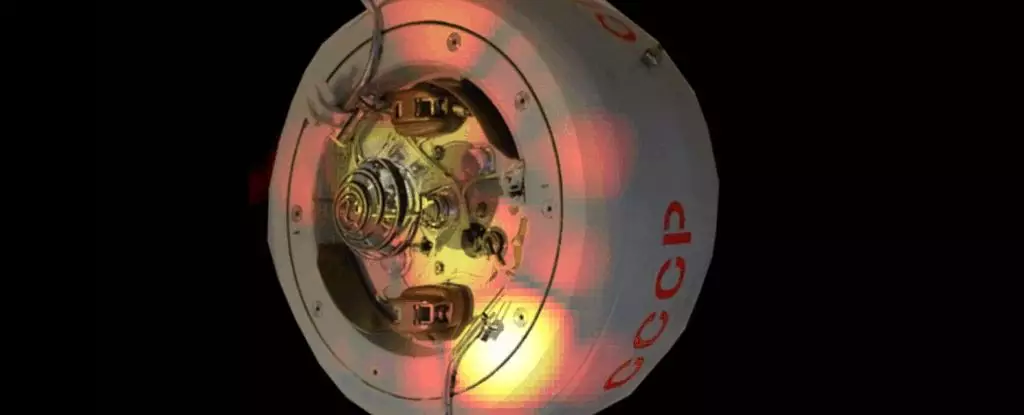In the annals of space exploration, the Venera missions stand as a testament to human determination and ingenuity. Launched by the Soviet Union over five decades ago, these missions aimed to break new ground in understanding our neighboring planet, Venus—a world shrouded in mystery and extreme conditions. The audacious spirit that marked the early 1960s still resonates today, as we continue to grapple with the lessons of past endeavors. Out of 29 probes sent into the fray, only 16 succeeded in either landing on or orbiting Venus. This stark reality highlights both the triumphs and failures of space exploration, serving as a reminder that the cosmos is a harsh and unforgiving terrain.
Amid these remarkable missions, an unassuming spacecraft named Kosmos 482 was lost to time. Launched in March 1972, its trajectory kept it in the eternal dance of Earth’s gravitational grip for over 53 years until its dramatic reentry on May 10, 2025. While the fate of many probes serves as cautionary tales, Kosmos 482 has become unofficially immortalized as a symbol of ongoing human engagement with the complexities of space. It spent its years adrift in space, a poignant reminder of our collective aspirations trapped in a limbo of terrestrial pull—but it finally culminated its journey in a fiery descent back to Earth.
Cosmic Encounters and Scientific Significance
On May 8, 2025, the German-based Fraunhofer Institute for High Frequency Physics and Radar Techniques captured the last images of Kosmos 482, revealing its tumultuous descent through the atmosphere. The images sparked widespread intrigue and speculation within the global scientific community and beyond. Though initial estimates suggest the probe reentered over the Indian Ocean, the exact location remains shrouded in mystery, capturing public imagination and igniting conversations about space debris and the remnants of humanity’s forays into the ether.
The European Space Agency (ESA) provided preliminary tracking details as Kosmos 482 shimmered across the skies of Europe, marking an event that was both scientifically impactful and personally significant. Initial excitement mixed with tension as the ESA confirmed that it was no longer detectable within the anticipated orbital parameters, leading to speculation about its fiery demise. The lack of ground reports on its final moments only compounds the curiosity surrounding this historic artifact. What is it about humanity’s efforts in space that compels us to lose track of such monumental endeavors?
Venus: A Planet of Extremes
The allure of Venus lies not just in its proximity to Earth, but in the extreme conditions that make it the closest thing to hell without leaving our solar system. With scorching surface temperatures averaging a blistering 464 degrees Celsius and atmospheric pressure 92 times that of Earth, any probe sent to this enchanting yet forbidding world requires near-impenetrable durability. The conditions, marked by rain composed of sulfuric acid, pose insurmountable challenges for even the most advanced technology. Thus, the original Venera probes were meticulously engineered to withstand these unrelenting extremes.
As Kosmos 482 began its journey back to Earth, many scientists postulated that remnants might withstand the brutal forces of reentry. However, even with robust design philosophies like Design for Demise coming into play, there remains an unsettling truth about our legacy in low-Earth orbit: the skies are crowded with defunct spacecraft, remnants of ambitious projects long past.
The Reckoning of Space Junk
The decade-long challenge of space debris is a harsh wakeup call for humanity. The conversation surrounding space exploration is shifting from unbounded possibilities to the tangible consequences of our ventures. Current design principles advocate for the thoughtful creation of spacefaring objects that will harmlessly disintegrate upon reentry, posing minimal risks to those of us on the ground. However, the application of these philosophies is inconsistent among various manufacturers, revealing a disconcerting truth: while we launch new projects at a staggering rate, the reconciliation of our past endeavors lags behind.
While the descent of Kosmos 482 did not lead to any known calamities, it serves as a poignant reminder that even the cosmos, often perceived as infinite, is becoming increasingly congested. Human actions in pursuit of knowledge are consequential and necessitate a paradigm shift in how we treat our own orbital environment. The awe-inspiring journey of Kosmos 482 spotlights an essential call to action to ensure that as we continue to explore, we do so responsibly. We must reflect on the legacy we are creating—whether it trails in the stars or lingers as junk, we hold the keys to the future of space exploration in our hands.


Leave a Reply